Betting strategies have been around for a long time and can be used in many casino games, including baccarat. Using such approaches aims to gain a mathematical advantage to cut down on your losses and hopefully make a profit in the long run. This guide will break down several baccarat techniques in simple terms, so you can decide which one works best for you.
The Martingale
It is the most straightforward and easiest-to-use strategy out there. Before starting the baccarat game, you decide on a base unit. It can be $5, $10 per hand, or whatever you want. You use it to handle your bets at the table.
On a win, you keep the bet the same. On a loss, you double its size for the next hand. So, if you lost $10, now you bet $20. Lose again, and the bet goes to $40, $80, $160 and so on. The premise is that you will recover your losses if you keep doubling your bet.
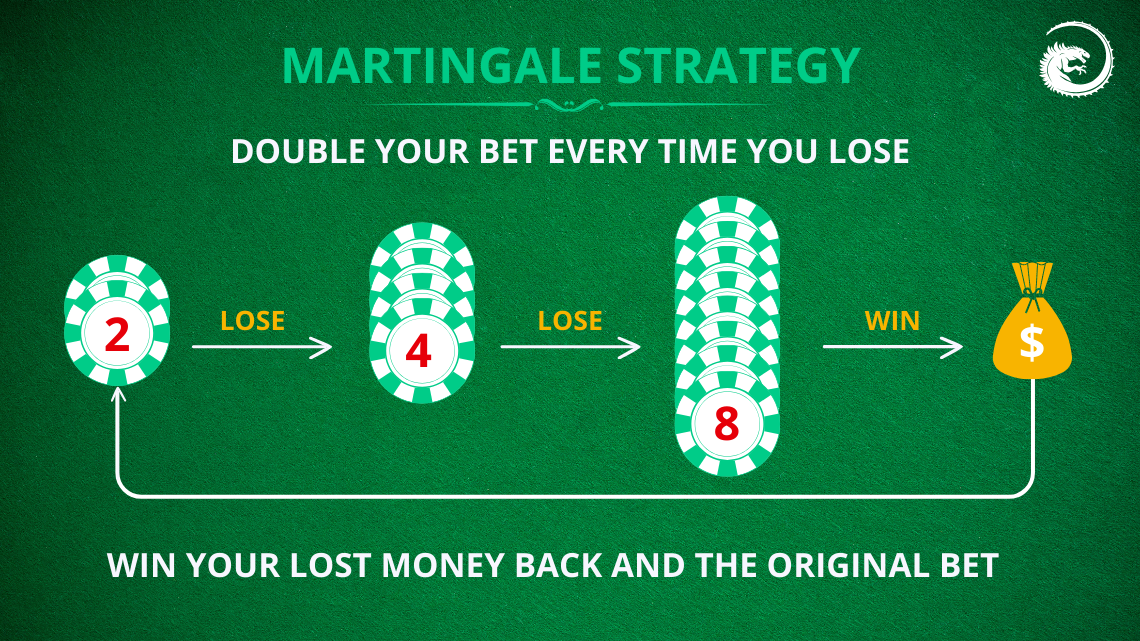
The Paroli
In this system, you start with your base unit bet, and after a win, you double the bet. You return to your base unit once you hit a losing hand.
The trick is to stop doubling your bet after the third winning hand. If you keep doubling beyond that point, you risk losing too much. So, after the third win, go back to your base unit bet and start again.
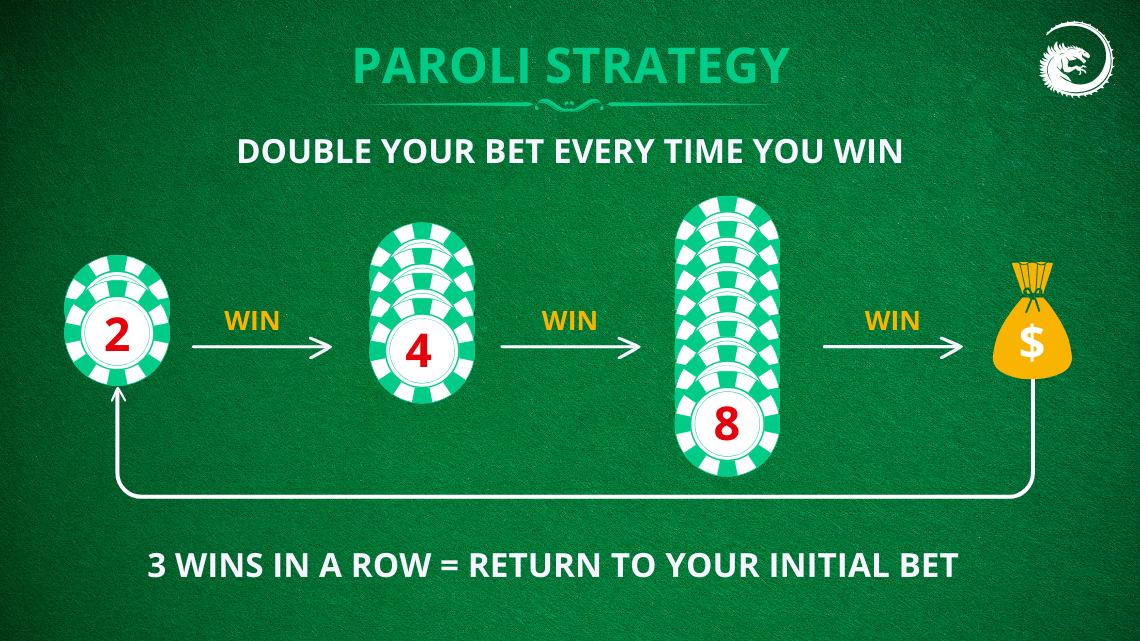
The Fibonacci
This technique is a bit more complex and requires a bigger bankroll. To simplify, we use one starting unit and follow this betting progression: 1, 1, 2, 3, 5, 8, 13, 21, 34, 55, 89. As you can see, each next bet is the sum of the previous two.
You apply this sequence after losing hands to recover losses. Once you win, you return two numbers in the betting progression. So over time, the bets become bigger, thus the higher starting balance.
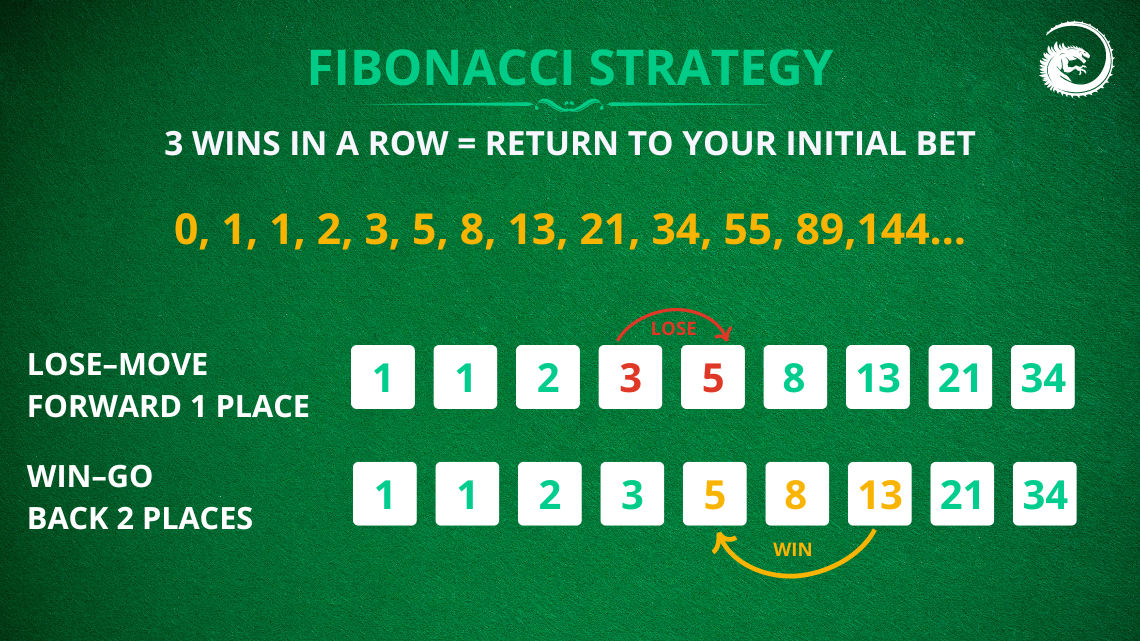
The D’Alembert
Such a method is applied to both winning and losing hands. It doesn’t require massive bankrolls, like the Martingale or some other progressive strategies. Still, it gives you reasonable control over your bets.
For each losing hand, raise your bet by one unit. After a win, reduce it by one unit. For example, if your base unit is $10, and you lose, your next bet will be $20. After a success, you’ll return to $10.
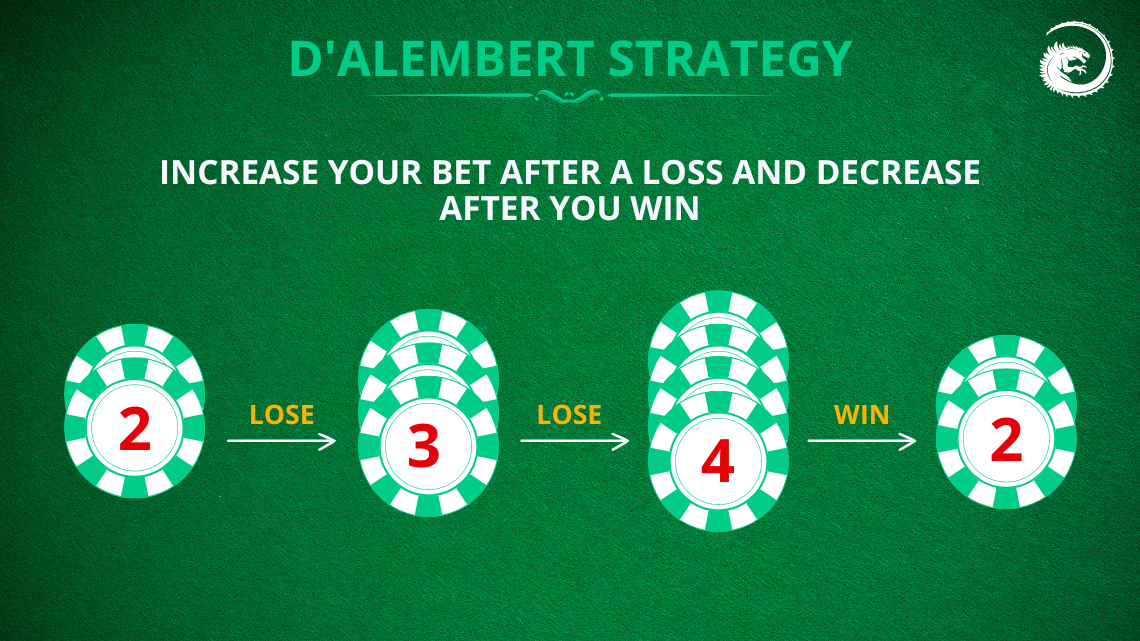
The Labouchere
This approach requires players to set a goal for how much they want to gain. You divide that number into 5 other numbers and use them to bet on baccarat. For example, a targeted win of $50 gives you 8, 9, 10, 11, 12.
To start the progression, you bet the sum of the first and last numbers, which is $20. If you win, you cross them from the list and move on to the next two.
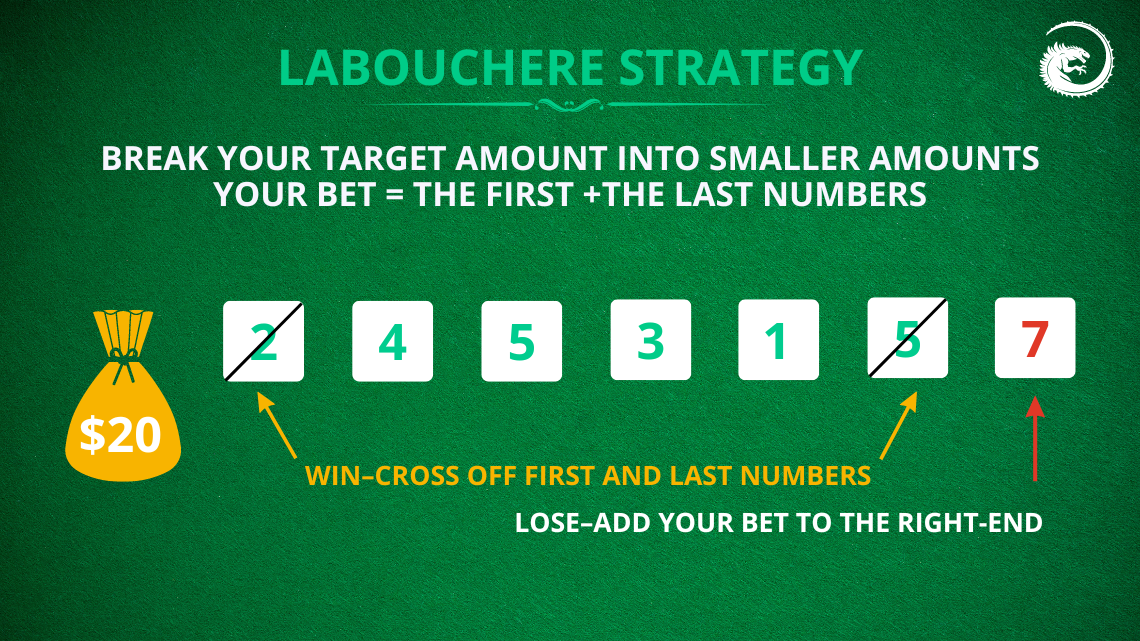
The One-Sided
Here, you simply choose a bet size and wager on either the banker or the player all the time. The premise behind this technique is that you will profit from winning streaks.
The banker has a small advantage in baccarat, so it’s the more favourable hand to bet on. But you need to limit how much you want to receive, as luck can quickly change.
1-3-2-6
This simple tactic aims for short-term profit. You just follow the 1, 3, 2, 6 progression in unit sizes. On each win, you increase the bet according to the progression. If you lose, the progression starts over, and if you get to the end, you start again with your base unit bet. Winning all the bets leaves you with 12 units in profit.
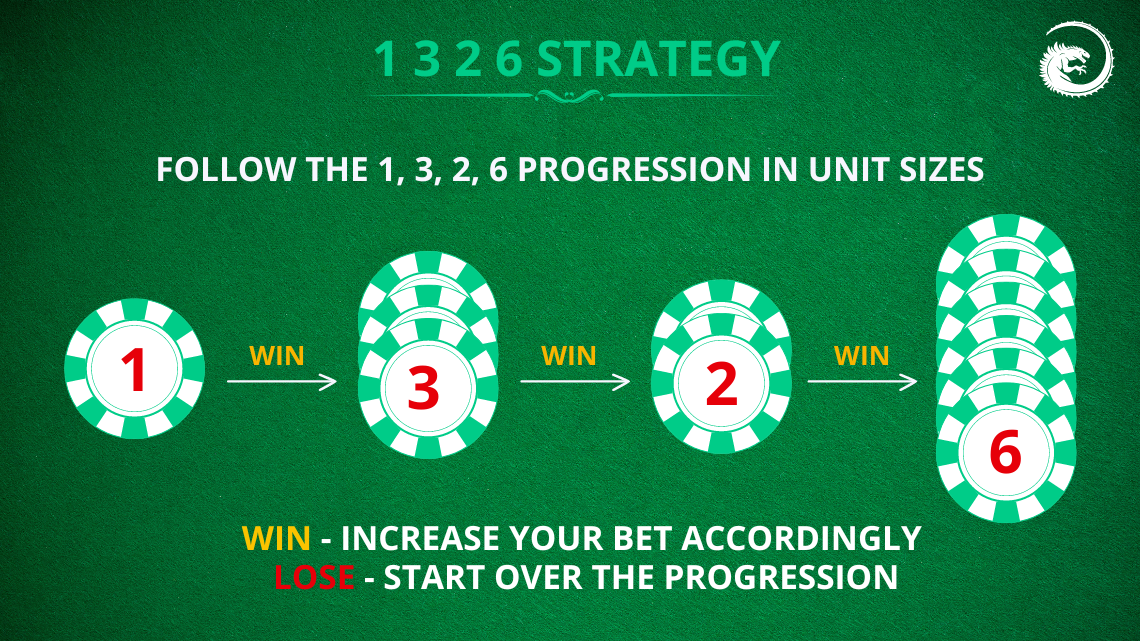
1-3-2-4
This system is similar to the one explained above. But it’s less volatile as you don’t use a 6-unit bet in the end. With this approach, a loss will only cost you 4 units instead of 6. The rules remain the same: after each win, you follow the 1, 3, 2, 4 progression. If you lose, you simply start the sequence over.
Which Betting System to Choose
Various baccarat systems can assist in reaching your winning goals, but success is never guaranteed. It’s important to choose a tactic that matches your bankroll level and approach to risk. Here’s a comparison of popular betting strategies to help you decide which one suits your style. These betting systems are common in other games, such as roulette.
| Strategy | Risk Level | Experience |
|---|---|---|
| Martingale | High | High rollers |
| Paroli | Medium | Beginners |
| D’Alembert | Low | Beginners |
Advanced Techniques for Baccarat
In addition to the strategies explained above, you can apply several advanced systems. Usually, they are reserved for pro players, but it doesn’t mean you can’t utilise them either.
Card Counting
This approach can give you a significant advantage in blackjack, but it doesn’t help you much when playing baccarat. This is so because the baccarat cards favour the player and the banker.
Note:Card counting isn’t worth your efforts in baccarat.
But if you want to learn how to count cards in baccarat, this is what you need to do. You have to use the baccarat card values scheme. At the start, the count is 0. Cards with values of 1 to 4 (Ace, 2, 3, 4) add +1 to the count, while those valued at 5 to 8 (5, 6, 7, 8) subtract -1. Cards worth 9 or 0 (10, Jack, Queen, King) don’t affect the count and stay at 0. When the count reaches -4 or lower, bet on the player.
Note:If the count is higher, place your wager on the banker.

Baccarat Betting Patterns
Over the years, players have developed betting patterns based on the shoe’s outcomes. They apply them in baccarat, believing similar patterns will emerge in future shoes. We will focus on two primary scorecards: the Bead Road and the Big Road.
Note:Baccarat roadmaps are visual tools that show the results of past games. They help players spot patterns and predict possible outcomes for the next round.
The Bead Road
In the Bead Road, there are spaces for up to 108 hands, enough to cover the hands in the shoe. It’s up to 18 columns wide and goes 6 rows down. The hands are recorded vertically from top to bottom, each column showing six hands before moving to the next.
Marks are explained as follows:
- A red circle is a win for the Banker
- A blue circle is a win for the Player
- A green circle is a Tie
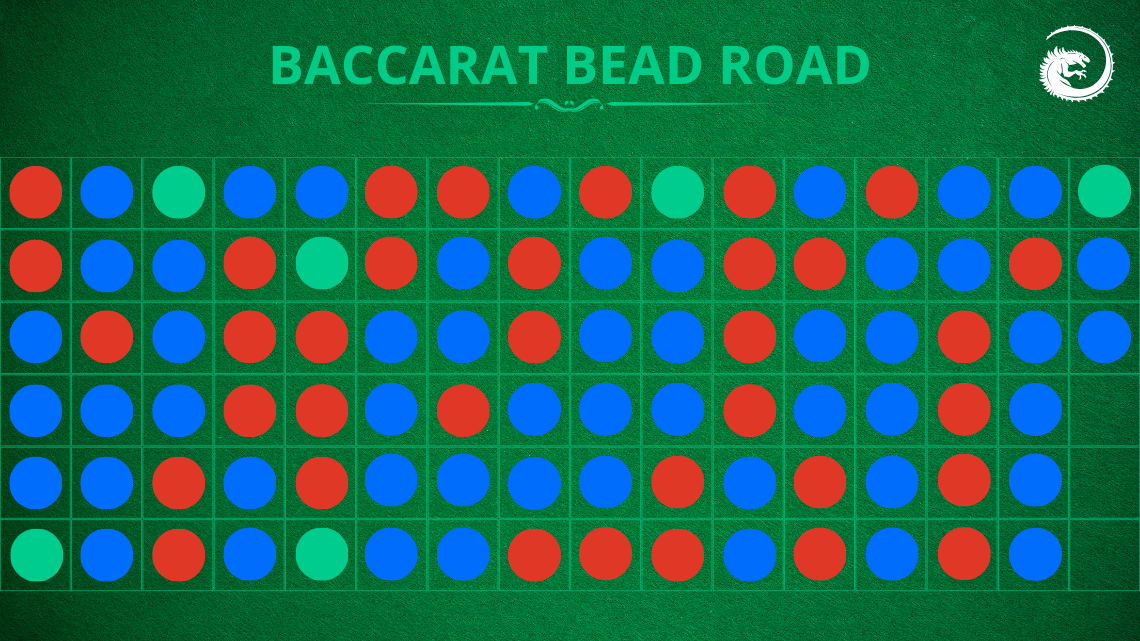
The Big Road
This one works similarly to the Bead Road, but there are 6 rows and up to 40 columns here. The same colours are used, but the results are marked differently.
The banker’s winning hands are added in the first column, and once the player gains success, the win is marked in the second column. If the banker gains an advantage, it moves to the third column. The tie comes on the 6th hand, marked in green.
Marks are explained as follows:
- A red circle is a win for the Banker
- A blue circle is a win for the Player
- A green circle is a Tie marked with a green, diagonal line. The total number of Ties can be written in a circle.
Each time 7 or more wins in a row occur, it’s called the Dragon, with the last winning hand starting the Dragon Tail. If more wins land, they continue the Dragon Tail.
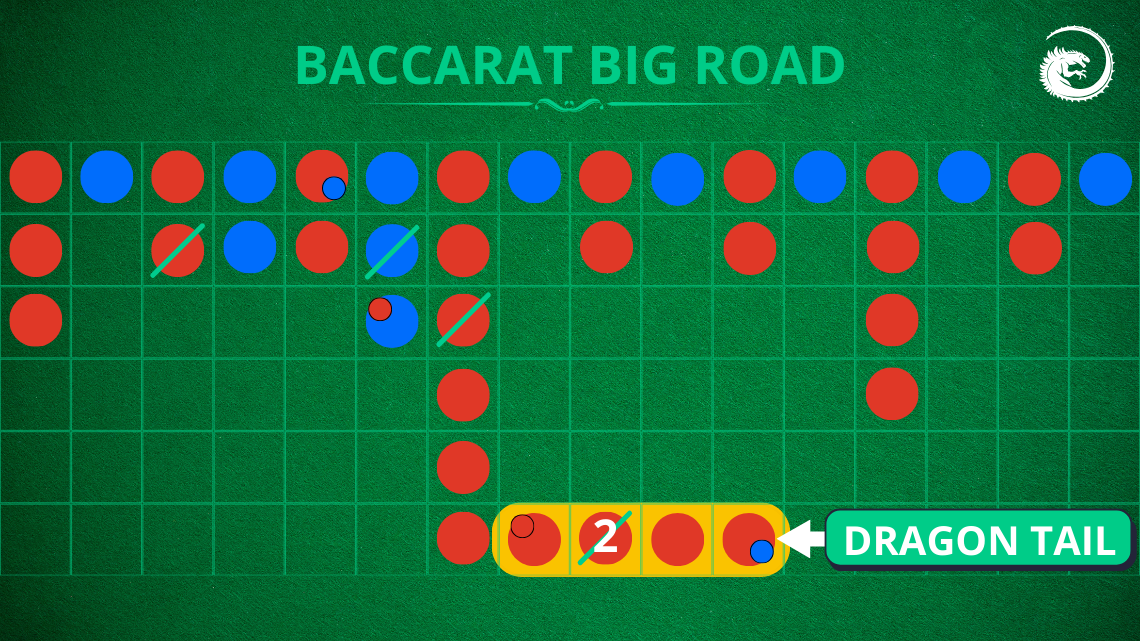
Pro Strategy Tips
Baccarat is a game of chance, but following a few strategic tips can help you play smarter and improve your odds. Here are some to consider:
- Use betting strategies: These can become your friend in the long run, helping you recover your losses and make a profit if luck is on your side.
- Bet on the banker when you can: The banker has a smaller house edge of 1.06%, compared to the 1.24% for the player. So when in doubt, bet the banker.
- Play with a bigger bankroll: Any casino game can cause a losing streak. This is why having a bigger balance is important to recover your losses and make a comeback.
- Use bonuses: If the platform offers some bonus, use it. Such extras are typically rewarding, so there’s no reason to pass them up. These may include free cash or other benefits that boost your balance and lift your victory perspectives.
- Know when to stop: Set a winning goal, and when you reach it, walk away to prevent you from giving back your winnings.









